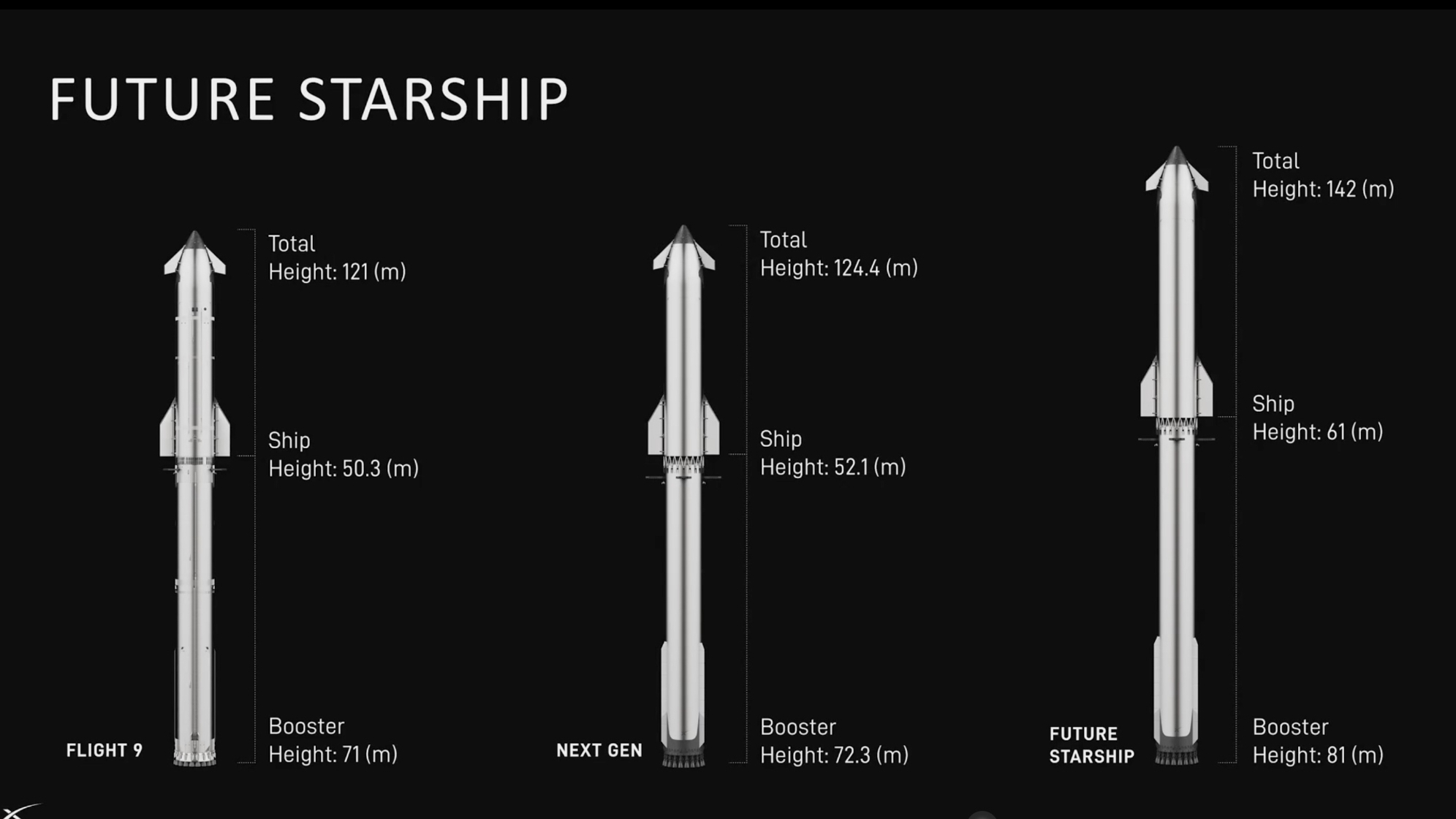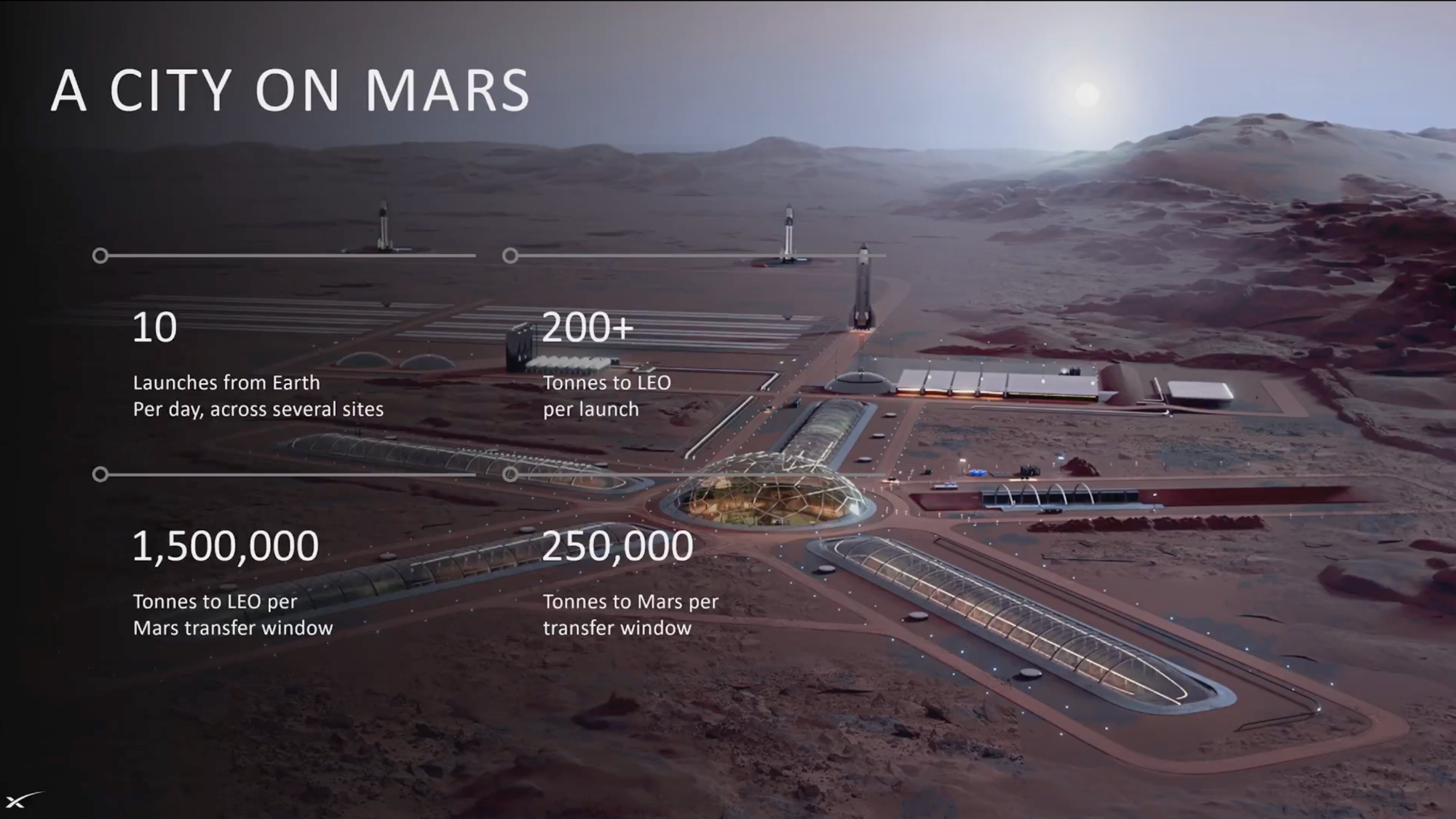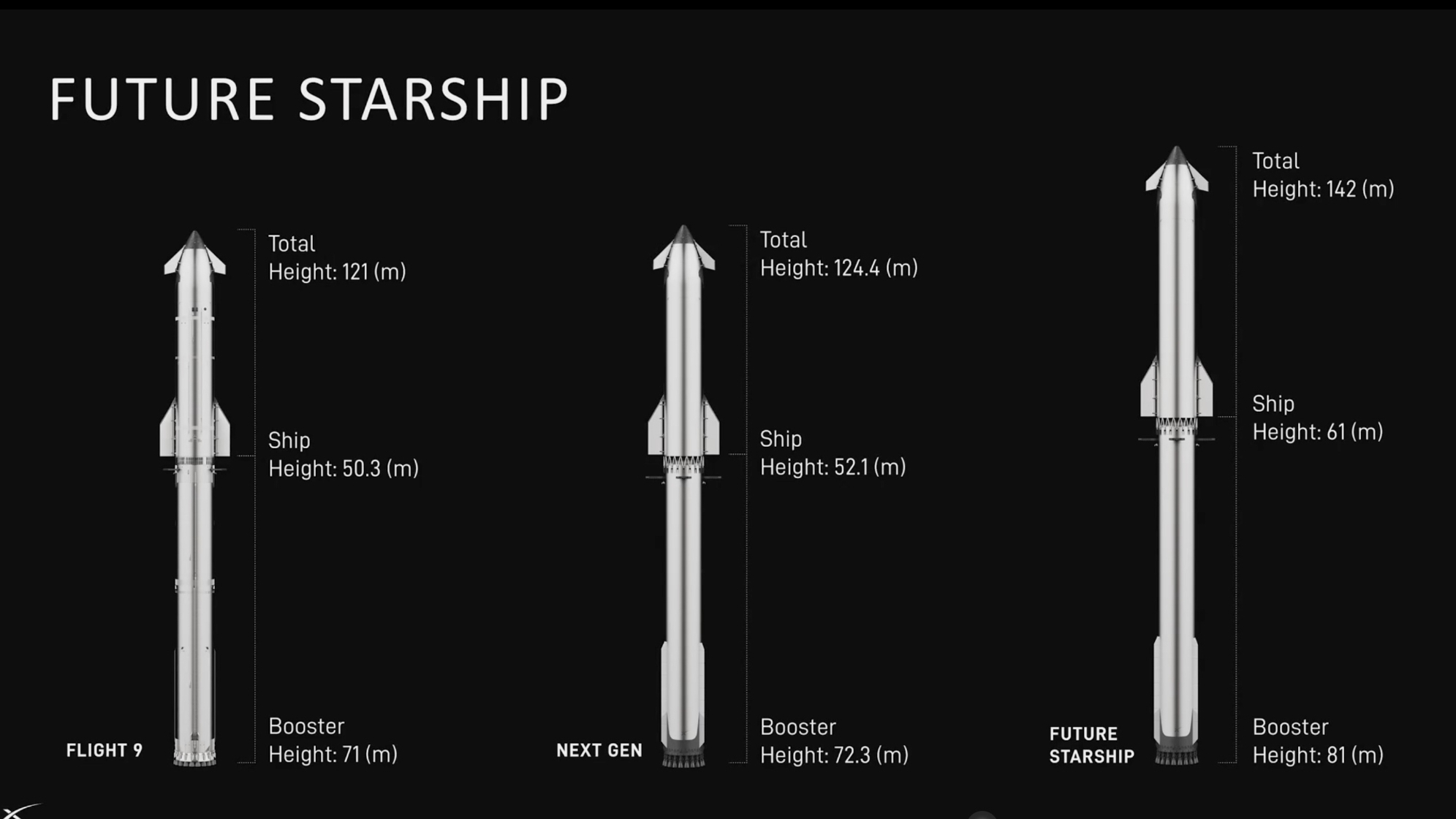SpaceX is still shooting for Mars next year with its giant Starship rocket, despite some recent explosive hiccups with the megarocket.
That was one of the takeaways from a new update that Elon Musk just gave about SpaceX‘s plans to help humanity settle the Red Planet — an ambitious goal that has driven the billionaire for decades.
“Progress is measured by the timeline to establishing a self-sustaining civilization on Mars,” Musk said in the 42-minute presentation, which SpaceX posted on X on Thursday (May 29), referring to the ongoing work with Starship.
The giant rocket consists of two elements, both of which are designed to be fully and rapidly reusable: a booster called Super Heavy and a 171-foot-tall (52 meters) upper stage known as Starship, or simply Ship.
Starship has nine test flights under its belt, the most recent of which launched on Tuesday (May 29). Ship reached space on that mission but experienced an anomaly shortly thereafter, apparently due to a propellant leak; SpaceX lost control of the vehicle, and it fell back to Earth in an uncontrolled reentry over the Indian Ocean.
Ship also had issues — more serious ones, in fact — on Flight 7 and Flight 8, which launched in January and March of this year, respectively. On both occasions, Ship exploded less than 10 minutes into flight, raining debris down on the Atlantic.
Musk seemed undaunted after Flight 9 on Tuesday, noting Ship’s improved performance compared to the two previous liftoffs and stressing that the company has a wealth of data to analyze going forward.
He struck a similar tone during the video update, which was filmed at Starbase, the newly incorporated South Texas city that serves as Starship’s manufacturing and launch hub.
“So with each launch — especially in the early days of Starship — each launch is about learning more and more about what’s needed to make life multiplanetary and to improve Starship to the point where it can be taking, ultimately, hundreds of thousands, if not millions, of people to Mars,” he added.

Starship is the biggest and most powerful rocket ever built; the current version stands about 397 feet (121 m) tall. But it will get even larger in the coming years, if all goes according to plan.
The next iteration of the vehicle, known as Version 3, will be 408 feet (124.4 m) tall when fully stacked, Musk said during the presentation. This is the variant that is expected to be capable of flying to, and helping to populate, Mars. Musk said it will be reliably and rapidly reusable, and the upper stage will be refueled in Earth orbit — a necessary ability for deep-space travel, as launching with all the necessary fuel onboard would leave little available mass for payload (such as people and habitat modules).
Version 3 should fly soon: “We’re aiming to launch for the first time at the end of this year,” Musk said.
If everything works out, Starship could be headed for Mars just a year or so later, he added.
The Red Planet and Earth align properly for interplanetary missions just once every 26 months. The next such opportunity comes in 2026 between the months of November and December, and SpaceX will try to hit it; the goal is to send five Starship Version 3 vehicles to the Red Planet to prove out the vehicle and its associated tech, Musk said.
These first Mars Ships — and it will be just Ships, as Super Heavy will come back down to Earth shortly after liftoff for inspection and reflight — will be uncrewed. But they will carry some Optimus humanoid robots, which are built by Tesla, the car company that Musk leads.
“That would be an epic picture — to see Optimus walking around on the surface of Mars,” he said.
It’s unclear when we’ll be getting those photos, however, because hitting the 2026 launch target will be tough. The biggest hurdle, according to Musk, will be mastering off-Earth refueling of Ship.
“We’ll try to make that opportunity, if we get lucky,” Musk said. “I think we probably have a 50/50 chance right now.”

Related stories:
If Starship does indeed fly to Mars in 2026, SpaceX will ramp up the ambition and the activity, sending about 20 Ships to the Red Planet between 2028 and 2029. And there could be people on those flights.
“Assuming the first missions are successful and they land successfully, we’d send humans on the next mission, and we really start building the infrastructure for Mars,” Musk said.
Or, “maybe, just to be safe, we might just do two landing episodes with Optimus and do the third one with humans,” he added. “We’ll see.”
SpaceX has already been scouting out possible sites for the Mars city. The right place will be relatively far from Mars’ frigid poles, have accessible water ice and be relatively flat, to facilitate safe rocket landings and liftoffs. The leading candidate right now, according to Musk, is Arcadia Planitia, a volcanic plain in the Red Planet’s northern hemisphere.
One hundred Ships could fly to Mars during the next launch window (in 2030-2031), and 500 or so in the one after that (in 2033), according to one of the slides in Musk’s presentation.
The end goal is a self-sufficient city on Mars, which will be able to survive even if it somehow becomes cut off from our civilization on Earth. Such a city will likely consist of more than a million people, and require the transport of millions of tons of cargo across deep space.
Such a city would, in Musk’s view, be built and serviced with the aid of Starship — perhaps most efficiently by a future version that stands 466 feet (142 m) tall when fully stacked. When this city is mature, several thousand Ship upper stages could be arriving and leaving during each Earth-Mars launch window, he said.
“This is, like, an incredible thing to have — this amazing city on Mars, the first city on another planet and a new world. And it’s also an opportunity, I think, for the Martians to rethink how they want civilization to be,” Musk said. “All right, let’s get it done!”



